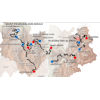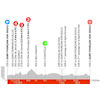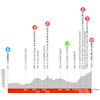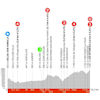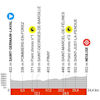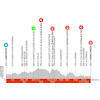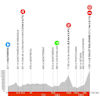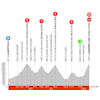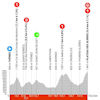Stage 1 looks enticing for the sprinters. The opening is hilly, but when push comes to shove, the route is flat to rolling. There’s a slightly uphill section 9 kilometres from the finish.
Stage 2 is a hilly race with almost 2,700 metres of climbing. The finish line is situated at the Col de la Loge, a 10.9 kilometres climb with an average gradient of 3.6%.
The riders take on an elevation gain of over 2,800 metres in the 3rd stage. Most climbing is done in the last 60 kilometres, albeit at moderate gradients, while the finish is situated on a 3.8 kilometres hill at 5.2%.
The ITT of the Critérium du Dauphiné is a flat to rolling endeavour of 34.4 kilometres.
The 5th stage is a hilly race with a flat finale.
The fireworks are set to detonate in the final weekend. It warms up in stage 6, which, despite having an elevation gain of 3,206 metres, offers a relatively friendly way to get into the climbing groove. Yet, the finishing ascent is something else. The Collet d’Allevard is an 11.1 kilometres test at 8.1%, with large sections hovering around 10%.
Stage 7 is the Queen Stage. The riders face 4,500 metres of climbing over a course of 155 kilometres. The climb to the finish in the Samoëns 1600 ski station is a 10 kilometres toil at 9.3% .
Featuring 3,640 metres of climbing, the final stage of the Dauphiné is a 152.5 kilometres race from Thônes to the Plateau des Glières. The final climb adds up to 9.4 kilometres and the average gradient sits at 7.1%.
Critérium du Dauphiné 2024: route, profiles, more
Click on the images to zoom
